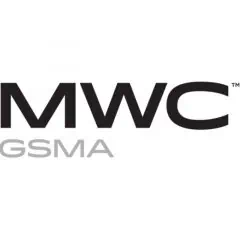
With the increase in global travel, the need for international SIM cards — those small, swappable cards that allow smartphones and other mobile devices to operate properly outside of their home countries — is growing exponentially around the world. When G-Mobile decided to enter that market and become a new Mobile Virtual Network Operator (MVNO) by marketing its own line of travel SIM cards and related services, it believed it could succeed in this very competitive field. A critical prerequisite for the operator, however, was a back-end infrastructure that could be flexible in terms of integration and the delivery of new services — and at the same time, one with low operating costs.
Because of our unique requirements, we could not use off-the-shelf mobile core components such as HLR, MSC or SMSC, so we went ahead with developing them in-house. We needed a very flexible billing system with open architecture so we could use its existing functionality and then develop further integrations or enhancements on top of that.
Armenak Khachatryan, co-founder and chief technology officer of G-Mobile
G-Mobile’s Journey to Success as an MVNO with PortaBilling’s Flexible and Scalable Infrastructure
With scalability, reliability, open architecture and cost-effectiveness as its main considerations, G-Mobile found its answer in PortaBilling, the BSS & OSS (Business and Operation Support System) and the OCS (Online Charging System) from PortaOne. It is a convergent real-time system for a variety of telecom billing services, including voice, SMS and data. And what’s unique about PortaBilling is that its license owner has access to its database, middleware API and even the product’s source code. So this provided unmatched opportunities for integration and platform enhancement, which G-Mobile was eager to utilize.
The development of full mobile core and integration was done in only 14 months and then HelloSIM’s MVNOs went live. Its subscribers now use the service while traveling to more than 200 countries — for incoming calls, outgoing calls (direct and callback), incoming and outgoing SMSs and GPRS mobile data services. This flexible logic that PortaBilling offers also allows HelloSIM to bill under different scenarios for competitive advantage: customers can be offered promotional or discounted rates such as limited free data, free calls for a pre-defined number of minutes, or rates that vary by time of day or length of call.
As a part of the network design, HelloSIM implemented a SS7-SIP gateway that allowed them to bring every (incoming or outgoing) subscriber call to PortaSIP – VoIP softswitch provided by PortaOne.
This expanded the suite available to subscribers with features like “follow-me” to multiple numbers — something that regular mobile subscribers do not have access to. Outgoing calls to international destinations are now routed via the advanced PortaSIP LCR (least-cost-routing) engine directly to VoIP carriers, thus minimizing operating costs. And following the “open architecture” approach, HelloSIM can implement any custom call handling scenarios directly in PortaSIP.
After that, another MVNO opportunity opened up in the neighboring country of Georgia. The requirements there mandated a “thin” deployment, whereupon MNO (Mobile Network Operator, the host) provides the full network core and the only thing the MVNO owns is a system for subscriber management (to activate / deactivate SIM cards) and the OCS (for charging subscribers for their activity). Using the “virtual environment” feature of the PortaBilling platform, this new GeoSIM MVNO was physically deployed on the same platform as the HelloSIM operations. G-Mobile was able to use the existing physical servers and the existing PortaBilling licenses — the only new component was its integration with the MNO network. Thus G-Mobile became a real MVNE, delivering service to various MVNOs.
Now G-Mobile is in the process of onboarding more MVNOs — since with the platform ready, each project will require only a small amount of integration work. Another strength that PortaBilling has, stated Khachatryan, is its ability to integrate with third-party applications such as CRM solutions, portals and payment processes. “The API is very easy to use, which saves us development time and cost,” he said.
About HelloSIM
HelloSIM is one of the products presented by GMobile. It is a travel SIM card that provides access to telecom services all over the world. HelloSIM is focused on both business and leisure travelers, giving them a way to stay connected on the go. Our 24/7 customer care service is available to our clients wherever they are. HelloSIM is an opportunity to save up to 85% on roaming charges, providing high-quality data, call and SMS services.

















